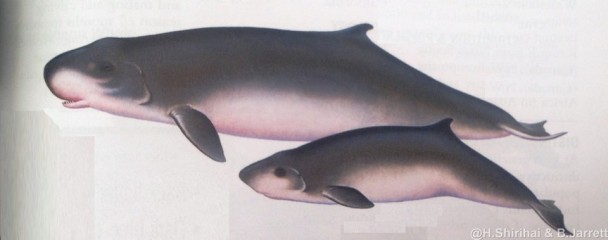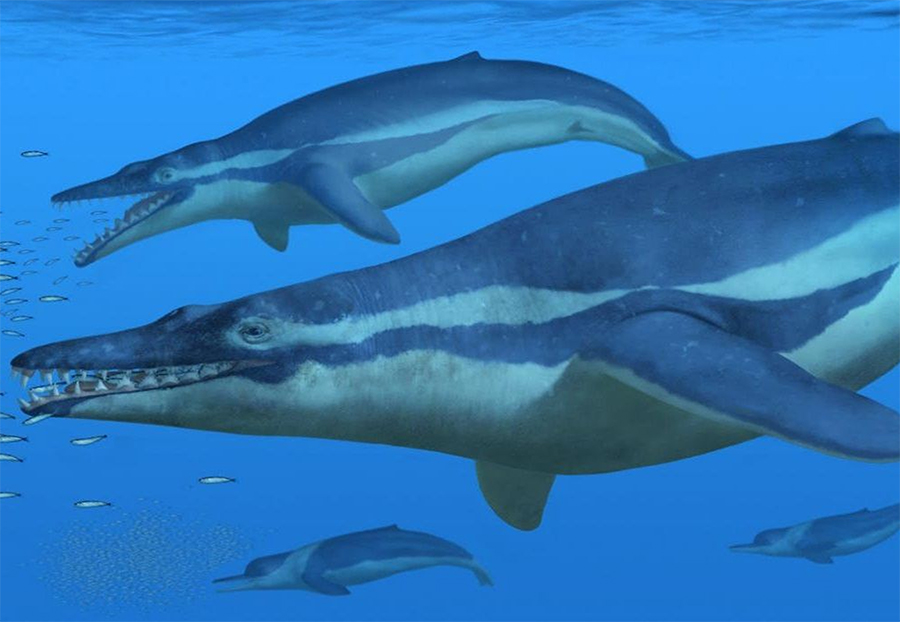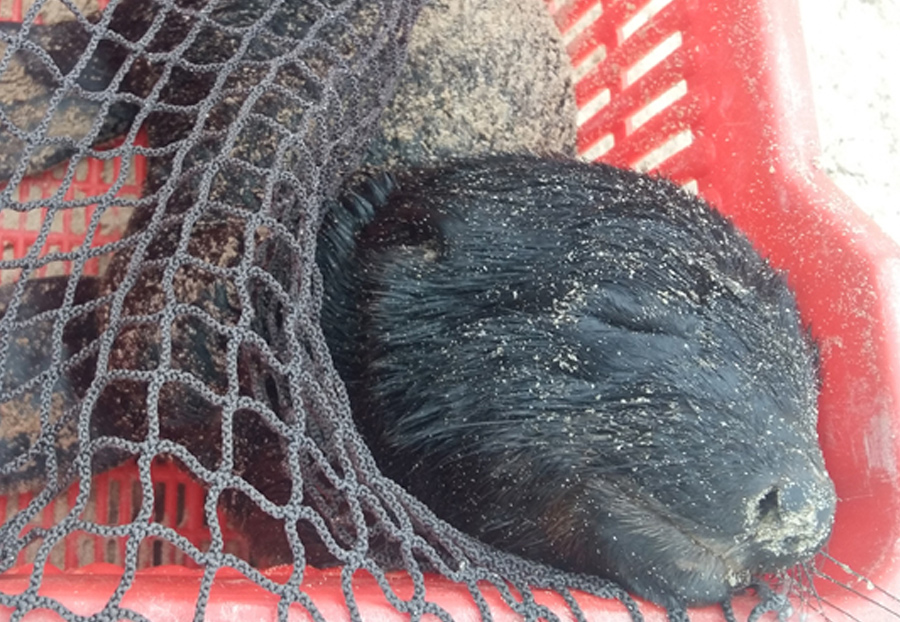Facts on Dwarf and Pygmy sperm whales (Kogia sp).

On the 10 of January 2015 a rare whale species stranded on Robberg Beach in Plettenberg Bay. It turned out to be one of the Kogia species which include the Pygmy (Kogia breviceps) and Dwarf (Kogia sima) Sperm whales. Until 1966 all kogia were seen as one species, but were later separated into two distinct species due to genetic and morphological differences. In recent years studies on Kogia sima further shown genetic differences between the Atlantic and the Indo-Pacific ocean, but more information is needed to categorize and give them different species status. To spot a Kogia at sea is hard, if not impossible, unless the sea is extremely calm. When spotted they generally lie at the surface “logging” and can be slowly approached by boats. None of the kogia species were targeted by commercial whaling, but some were harpooned in the 19th century when encounter by whalers.
The two Kogia species are toothed whales, however they are very different in appearance to other small tooth whales because of their shark like pointed heads and small lower jaw. They have a noticeable pigment line behind the eye that resembles gill slits and small pointed teeth in the lower jaw. They have a dark dorsal (upper side) body colouration that fades to a white-pinkish underside (ventral). When encountering Kogia at sea it is hard to differentiate between the dwarf and pygmy types. The main differences are that the dwarf is smaller in size (2.7m and max 272kg) than the pygmy (3.5m and max 450kg). The pygmy has a hooked dorsal fin, while the dwarf’s are triangle shaped. Pygmy sperm whales also have a slight hump on the back while the dwarf is flat on the back. Dwarf sperm whales have a more pointed snout than the pygmy and when seeing them in the water the dwarf sits lower on the surface then the pygmy.
Both species are found primarily in temperate to tropical waters and although the pygmy can occasionally be found beyond 40° north and south of the equator, the dwarf has not been recorded beyond this latitude. Both species are usually encountered alone or in mother – calf pairs, but aggregations of 6-10 individuals have been recorded. Juveniles seem to occur closer to the shore than adults (evident from stomach contents in stranded animals).
Both males and females reach sexual maturity between 3-4 years of age or when reaching over 2m in length. They have a 9-11 month gestation period and appear to have a peak mating and calving season from March – April, although in South Africa this is extended from December to March. Their calves are weaned at 1 year of age and females have been recorded to be pregnant and lactating at the same time. This allows them to the possibility to give birth every year. In pygmy sperm whales the new borns are 1.2m in length and weigh around 50kg, in the dwarf new borns are 1m and 40kg. They have a life span of approximately 22 years.
Both dwarf and pygmy sperm whales break the surface slowly after a long dive. They then remain motionless at the surface with the blowhole exposed to allow them to re oxygenate their bodies. Both species have been seen breaching on rare occasions, landing tail first or on their belly. When scared or under attack, they use the `squid tactic´ to get away from danger. The “squid tactic” is to expel a dark reddish-brown liquid from a sac in the intestine that clouds the water helping them to escape. They eat mid-deep water cephalopods, fish and crustaceans. The main food found in the stomach of the dwarf sperm whale indicated they mainly feed over the continental shelf of South African waters. Kogia are deep diving whales and generally dive between 100-300m to catch their food, but in the Northeast Atlantic they are thought to dive to depths of over 1000m to feed on shrimp.
Both kogia species have a ‘Data Deficient’ status due to the sparse amount of information on them. Being an offshore species the effects of human activities on their survival is difficult to quantify, however in recent years, several stranded animals have had plastic debris in their stomachs that ultimately leads to their death. They are also at risk of boat strikes due to their logging behaviour after long dives and their small body size and inconspicuous blow making them difficult to see. Other problems that could be the reason for them stranding are; anthropogenic sounds (man mad sound) especially from the offshore oil and gas industry, and bycatch in fishing gear.
References
– Nagorsen D. 1985 Marine Species No. 239, pp. 1-6 Kogia Simus
– http://www.iucnredlist.org/details/11048/0
– http://www.iucnredlist.org/details/11047/0
Books
– Walker mammals of the world volume 1 by Ronald M. Nowak.
– Whales dolphins and other marine mammals of the world (2006) by Hadoram Shirihai and Brett Jarrett. Prinston field guides 2006
– Whales and Dolphins of the Southern African Subregion. Peter B Best 2007. Cambridge University Press.




